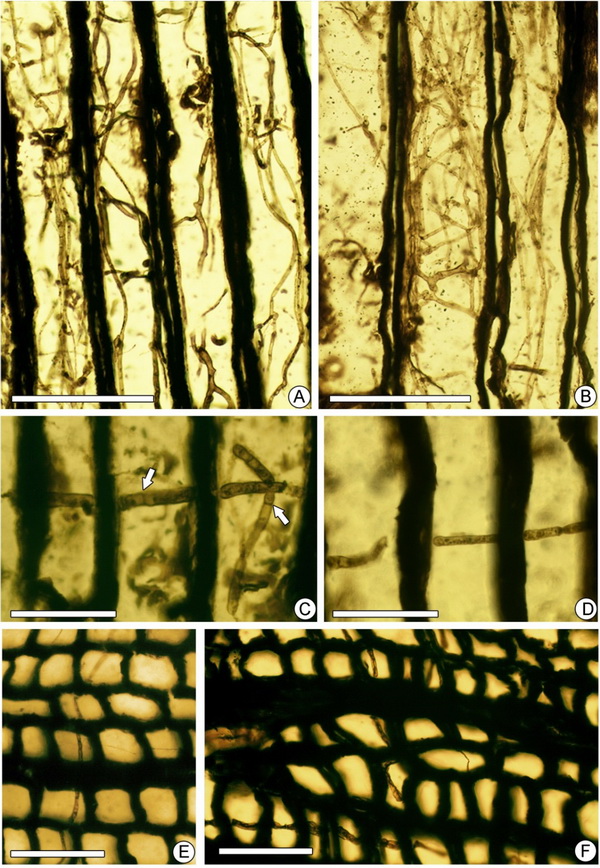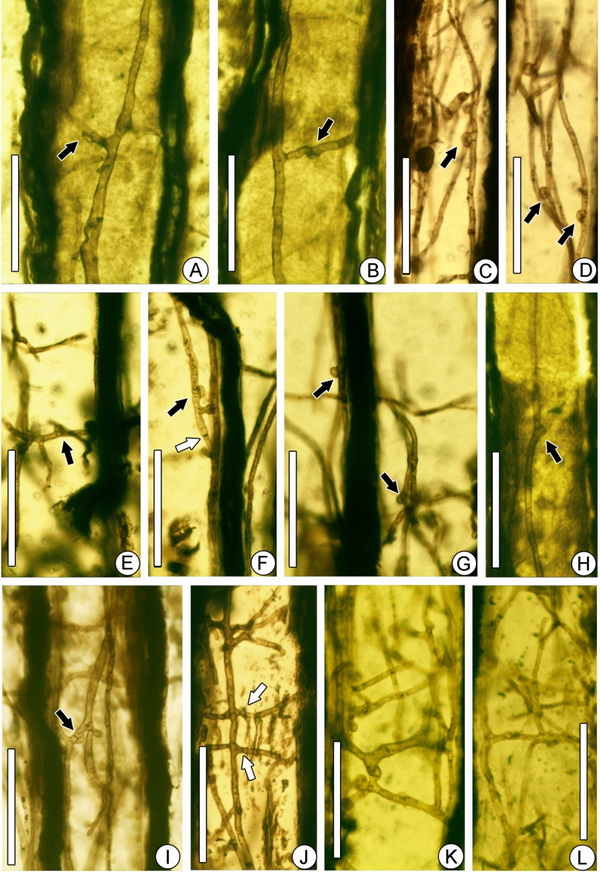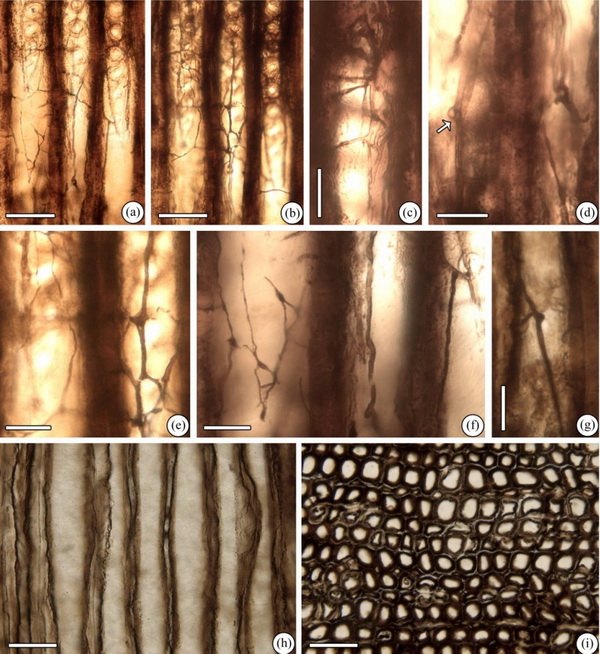Structurally preserved petrified woods contain not only information of wood anatomy, but also plenty of physiological and ecological information, including trace fossils of insect boring, fungal hyphae and other micro-organisms. Study of these permineralized plants is helpful to reveal the ecological and co-evolutionary relationships among plants, insects, fungi and other organisms in geological past. Abundant and diverse Cretaceous wood fossils have been recorded in China. However, previous studies of petrified wood mainly focused on their anatomy and taxonomy, little work has been reported on the fungal remains and the interaction between the wood hosts and fungi.
In recent years, a research team led by Prof. WANG Yongdong from the Nanjing Institute of Geology and Paleontology of the Chinese Academy of Sciences, and Dr. Tian Ning, an associate professor from Shenyang Normal University, carried out a comprehensive study on the Mesozoic wood fossils containing fungal mycelia with some update discoveries. Recently, two new reports from this team have been published on the journals Cretaceous Research and Acta Geologica Sinica (Chinese Edition)(cover story).
Well-preserved fossil mycelium consisting of clamp-bearing septate hyphae is found in a petrified conifer wood (Cupressinoxylon baomiqiaoense Zheng et Zhang) from the Lower Cretaceous Yunshan Formation in Heilongjiang Province, NE China. The fungal hyphae are tubular in shape with septa and typical clamp-connections. Taxonomically, the occurrence of clamp-connections indicates that the present fungal remains should be referred to the Basidiomycota. Ecologically, the present fossil mycelium is proposed to be a saprotroph, i.e. a wood rotting fungus.
The decomposition of the tracheary middle lamina of the wood host strongly implies that the present fungal mycelium to be a white-rotting fungus. Additionally, similar basidiomyceous fossils with white rot function were found in fossil conifer wood of Agathoxylon sp. from the Lower Cretaceous Guantou Formation in Xinchang of Zhejiang Province, SE China.
The present new finding of basidiomyceous fossils represents the first unequivocal records of Cretaceous wood-rotting fungi, provides increasing data on the fossil diversity of fungi in China, and contributes to further understanding the plant-fungal interaction in the Cretaceous terrestrial ecosystem.
Reference:
Tian Ning*, Wang Yongdong*, Zheng Shaolin, Zhu Zhipeng, 2019. White-rotting fungus with clamp-connections in a coniferous wood from the Cretaceous of Heilongjiang Province, NE China.Cretaceous Research, doi.org/10.1016/j.cretres.2018.11.011 (*authors for correspondence)
Zhu Zhipeng, Li Fengshuo, Xie Aowei, Tian Ning, Wang Yongdong, 2018. New record of Early Cretaceous petrified wood with fungal infection in Xinchang of Zhejiang Province, Acta Geologica Sinica-Chinese Edition, 92: 1149-1162 (cover story).

Fungal hyphae from the Early Cretaceous petrified wood in Heilongjiang Province, NE China (Image by TIAN Ning)

Fungal hyphae from the Early Cretaceous petrified wood in Heilongjiang Province, NE China (Image by TIAN Ning)

Fungal hyphae from the Early Cretaceous petrified wood in Zhejiang Province, SE China (Image by ZHU Zhipeng)
Contact:
Prof. WANG Yongdong, Principal Investigator
Email: ydwang@nigpas.ac.cn
Nanjing Institute of Geology and Palaeontology, Chinese Academy of Sciences
Nanjing, Jiangsu 210008, China
Download:
